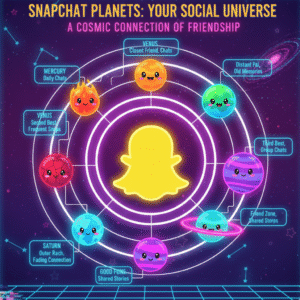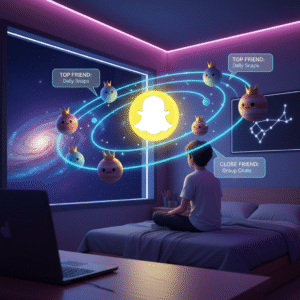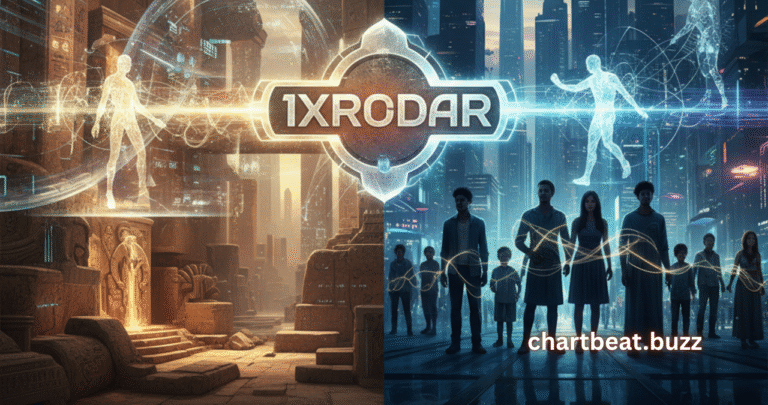
Snapchat Planets: A Complete Exploration of the Social Universe
The concept of Snapchat Planets represents one of the most fascinating evolutions in social media interaction, blending playful gamification with meaningful digital relationships. Emerging from Snapchat’s ongoing efforts to personalize user experiences, Planets introduced a creative way to visualize friendship dynamics using an interplanetary metaphor. In a world dominated by filters, streaks, and stories, this feature offered something more nuanced—an imaginative, visually engaging way to understand the closeness of one’s social connections. As Snapchat continues to evolve, Snapchat Planets stands out as an example of how technology, psychology, and creativity can merge into something both entertaining and meaningful.
The Evolution of Snapchat and the Birth of Snapchat Planets
When Snapchat launched in 2011, its primary attraction was the disappearing photo feature—a novelty that quickly made it one of the most popular apps among young users. Over the years, Snapchat continued to innovate with features like Stories, Bitmoji, and Snap Map. But the introduction of Snapchat Planets in 2023 marked a new level of social engagement. Planets was designed as part of the Snapchat Plus subscription, offering users a visual representation of their closest friends as planets orbiting around them.
This concept appealed deeply to Snapchat’s user base, as it turned ordinary friendship data into an artistic cosmic system. Planets reflects how digital platforms can translate abstract social relationships into relatable, visually rich experiences. Instead of lists and charts, Snapchat gave users a galaxy—a metaphor for their personal universe of connections.
Understanding the Concept Behind Snapchat Planets

Snapchat Planets operates on a simple yet effective principle. Each user who subscribes to Snapchat Plus can see their “Friend Solar System.” In this system, they are represented as the Sun, while their best friends are assigned planets according to their closeness. The first best friend becomes Mercury, the second becomes Venus, the third Earth, and so on, up to Neptune.
This approach transforms social hierarchy into something visual and gamified. The planets’ designs are detailed, colorful, and easily recognizable, making the feature instantly engaging. What makes Planets particularly interesting is how it uses friendship data, such as message frequency and interaction consistency, to determine each friend’s planetary position. By doing so, it adds an emotional and aesthetic layer to what would otherwise be raw data.
The Symbolism of Each Planet in Snapchat Planets
The Planets model borrows from astronomy, using the solar system as a metaphor for human relationships. Mercury, the closest planet to the Sun, symbolizes the closest friend—a person with whom you share the most frequent and intimate interactions. Venus, Earth, and Mars represent slightly more distant but still strong friendships. As the planets move outward to Jupiter, Saturn, Uranus, and Neptune, they represent friends who are less frequently in touch but still within the orbit of connection.
This symbolic framework resonates with users because it mirrors real human experience. Not all friendships are equally close, and Planets acknowledges this hierarchy without judgment. It gives users a visual map of their social world—something both introspective and entertaining. The brilliance of Snapchat Planets lies in how it makes digital friendship feel tangible and alive.
Historical Influence and Digital Innovation
To appreciate Planets, one must recognize the broader historical context of social visualization. Platforms like Facebook once relied on friend counts as status symbols, while Instagram emphasized followers. Snapchat Planets, however, redefines this dynamic by prioritizing emotional proximity over numerical popularity.
This innovation reflects a cultural shift toward authenticity and meaningful engagement. By combining interactive design with emotional psychology, Planets continues the legacy of creative social tools that blend art, science, and technology. It builds upon past social systems but adds a layer of sophistication that aligns with modern user expectations.
The Psychology Behind Friendship Visualization
At its core, Snapchat Planets appeals to a basic human desire—to understand and quantify relationships. Humans naturally seek patterns, even in emotional spaces, and Snapchat Planets provides a satisfying way to interpret social behavior. Seeing oneself as the Sun and friends as planets activates both emotional reflection and curiosity.
Moreover, Planets leverages principles of positive reinforcement. When users interact more with certain friends, they maintain higher planetary ranks. This can subtly encourage communication, strengthening digital relationships. Psychologically, it turns casual chatting into a meaningful game, where emotional closeness is visually rewarded.
How Snapchat Planets Redefines Modern Social Connection
In an era where most digital platforms foster surface-level connections, Planets introduces depth. It doesn’t just display who you talk to—it reveals how close you are. This changes how users perceive and manage friendships online. By visualizing emotional proximity, Snapchat Planets offers a rare blend of data transparency and emotional resonance.
Unlike algorithms that invisibly shape interactions, Planets makes the process visible. It teaches users to value genuine communication rather than numerical status. This transformation aligns with broader trends in digital wellness, where users increasingly seek authenticity over vanity metrics. Snapchat Planets provides a refreshing, introspective counterpoint to the performative culture of modern media.
Educational and Analytical Value of Snapchat Planets
Beyond entertainment, Snapchat Planets has significant educational and analytical value. It demonstrates how complex social networks can be simplified into accessible visual systems. Teachers and researchers have noted that Snapchat Planets can serve as a model for explaining digital sociology, emotional mapping, and network theory in classrooms.
It can also be analyzed from a design and data ethics perspective. The way Snapchat Planets uses personal data transparently offers lessons in responsible design. Instead of hiding relationship metrics, it transforms them into visual metaphors that enhance user understanding. This educative potential makes Snapchat Planets a unique case study for both digital innovation and emotional intelligence.
The Global Reception and Critical Perspective

Since its launch, Planets has received mixed yet intriguing reviews. Many users praised the creativity and emotional relevance of the concept, calling it one of the most personalized features in modern social apps. However, some critics expressed concern over the potential for social comparison and jealousy.
Despite such debates, Planets has proven remarkably resilient and adaptive. Its appeal lies in the balance it strikes between playfulness and insight. Social scientists have also acknowledged its influence on how young users perceive intimacy and friendship online. By gamifying relationships responsibly, Planets has opened a new chapter in digital sociology and human-computer interaction.
Future Prospects and the Role of Snapchat Planets in Social Media Evolution
Looking ahead, Snapchat Planets could evolve into a broader social mapping tool, expanding beyond personal friendship data. Future updates might integrate emotional analytics, communication sentiment, or even real-time visualization of shifting friendships. As artificial intelligence becomes more integrated into social media, Snapchat Planets could serve as a model for ethical, emotionally aware design.
Moreover, as other platforms compete for engagement, the unique symbolic strength of Snapchat Planets may inspire similar concepts elsewhere. It represents the future of personalization—where digital relationships are visualized as dynamic, living systems rather than static lists. The potential for innovation here is vast, bridging psychology, technology, and art in ways that redefine how humans experience connection.
Conclusion
Snapchat Planets exemplifies the creative intersection of technology, design, and emotional intelligence. By transforming data into a cosmic visualization, it gives users a sense of meaning within their digital universe. It is more than a playful feature—it’s a reflection of how social media can evolve toward empathy, transparency, and human understanding. As technology advances, Snapchat Planets will remain a symbol of innovation and imagination in the digital age, inviting users to explore not only their friendships but the emotional galaxies within themselves.
FAQs
What are Snapchat Planets and how do they work?
Snapchat Planets is a feature available to Snapchat Plus subscribers that visualizes their closest friends as planets orbiting around them. The user becomes the Sun, and each best friend is assigned a planet—Mercury, Venus, Earth, and so on—based on their interaction frequency. This feature uses communication data to represent emotional closeness in a visually appealing way.
How many Snapchat Planets are there in the system?
There are eight Snapchat Planets in total, corresponding to the eight major planets of our solar system. Each planet represents a specific position in your best friends list. For example, Mercury represents your number one best friend, while Neptune represents the eighth. This cosmic hierarchy helps users see their social structure clearly.
Why did Snapchat introduce Snapchat Planets?
Snapchat introduced Snapchat Planets to provide users with a more interactive and meaningful way to understand their social interactions. Instead of relying on plain lists, the company turned friendship data into a visual experience. This innovation encourages engagement, emotional awareness, and healthy communication patterns among users.
Can users change their position in someone’s Snapchat Planets?
No, the placement of each user in another person’s Snapchat Planets system is automatically determined by Snapchat’s algorithm. It depends on chat frequency, snap exchanges, and overall interaction activity. The only way to move closer—toward Mercury—is through genuine and consistent communication.
Are Snapchat Planets safe for user privacy?
Yes, Snapchat Planets is designed with privacy in mind. Only Snapchat Plus subscribers can access this feature, and each user can see their own placements privately. Snapchat does not publicly share your planetary positions, ensuring that your social dynamics remain personal and protected.






